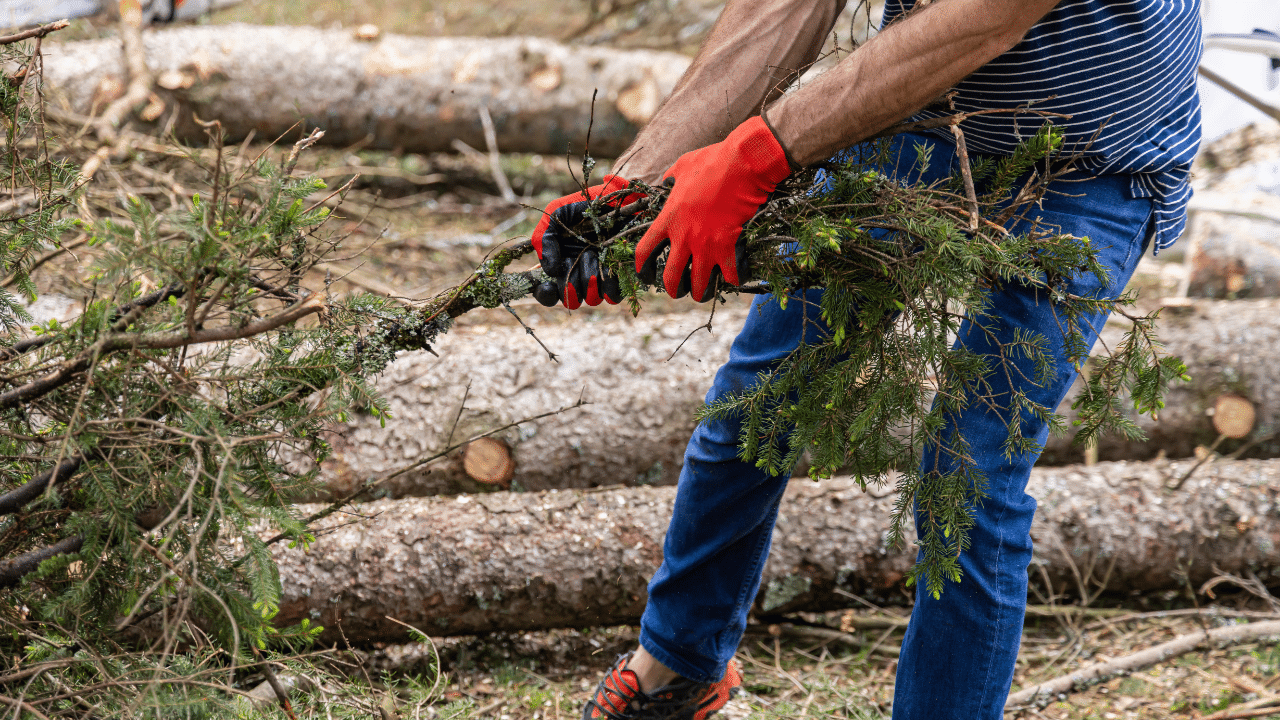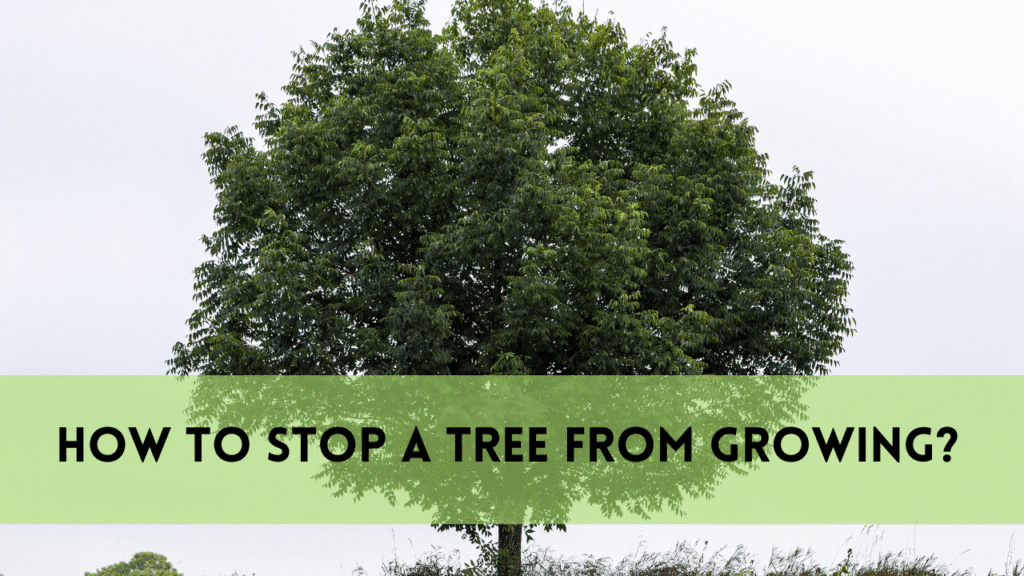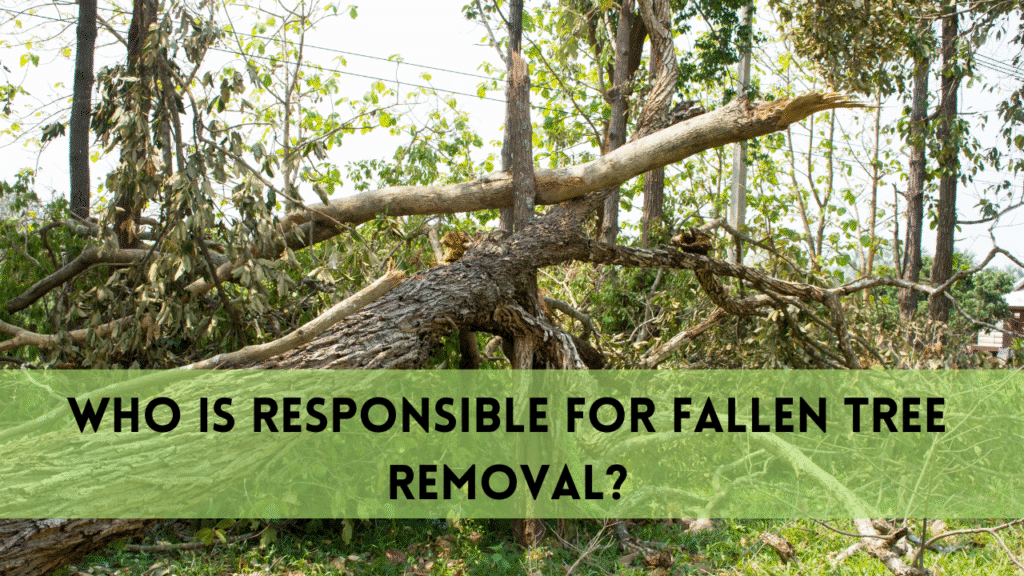The art of learning how to remove a small tree is an important ability for every homeowner. It doesn’t matter if it’s a noxious sapling or an invasive species, or a tree that has outgrown its place; taking care to remove it correctly will prevent regrowth and safeguard your landscaping. If you do it wrong, the way could result in stubborn roots, soil damage, or even injuries.
I can remember that first moment when I was required to remove a small tree in my yard. It was simple enough to dig and pull the tree, would you think? It turns out there’s something more. After a couple of failed attempts, I discovered the proper methods, and I’m now sharing the techniques with you.
When Should You Remove a Small Tree?
Before diving into how to remove a small tree, it is important to be aware of what removal is required.
- In-Crowding The tree may be located too close to other structures or plants.
- Damage or disease: A sick or damaged tree could become a hazard.
- Invasive Species Certain trees spread rapidly and engorge native plants.
- Landscaping changes: Maybe you’re redesigning your landscape and the tree is no longer a good fit.
If any of these applies the time is now to take action.
Tools You’ll Need to Remove a Small Tree
With the right tools, the task to remove a small tree is considerably simpler. The tools you’ll need are:
- Shovel (for digging around roots)
- Pruning Saws and Loppers (to reduce smaller branches and roots)
- Mattock and Pickaxe (for the stubborn roots)
- Gloves and Safety glasses (protection is crucial)
- Wheelbarrow (to transport away trash)
In the event that your tree grows taller, If the tree is larger, a hand-held winch could help in pulling the tree.

Step-By-Step: How To Remove a Small Tree
1. Cut Back the Branches
Begin by trimming smaller branches using loppers. This will reduce the weight and make the tree more manageable. For thicker branches, you can make use of a pruning saw.
2. Dig Around the Base
Utilizing a shovel, create the trench approximately 2 feet away from the tree. The root system is exposed. The aim is to loosen the soil so that it is possible to access the primary roots.
3. Sever the Roots
Small trees generally have taproot (a deep, central root) and lateral roots. The lateral roots are cut first using loppers or a saw. If you have a taproot employ a mattock for prying it out.
4. Rock the Tree Free
When the roots have been cut to a large extent then gently rock the tree in a circular motion. If it is not responding, look for any remaining roots. It’s a matter of patience to avoid broken branches and unsanitary growth.
5. Remove the Stump
If you aren’t sure you wish for the tree to grow in the future, you should remove as much stump as you can. Alternatively, you can grind it down or use a stump remover.
6. Fill the Hole
Backfill the area with new soil, then tamp it down to avoid sinking. Sprinkle grass seed or mulch to mix it with your backyard.
Alternative Methods to Remove Small Trees
In the event that digging doesn’t work, there are two alternatives:
Chemical Removal
Herbicides such as glyphosate could cause the tree to die over time. In the stump, drill holes and then apply the solution. It works, but it takes time and could affect plants around it.
Natural Smothering
Protect the tree by covering it with tarps or a thick mulch. Without sunlight, the tree will eventually end up dying. This takes longer, but it is chemical-free.
Common Mistakes to Avoid when You Remove a Small Tree
- Leaving roots behind, even tiny fragments of HTML0 can re-grow.
- Accelerating the process: The force of forcing the tree to grow can cause damage to the surrounding plants.
- Not paying attention to Safety: Always wear eye protection.
FAQs
Can I remove a small tree without digging?
Sure, you can use herbicides or other smothering methods; however, digging is the only way to ensure that all debris is removed.
How deep can tiny tree roots go?
Usually 1-3 feet; however, taproots could be deeper.
Will vinegar kill a small tree?
It may cause harm to young trees but isn’t as effective as commercial herbicides.
What is the length of time it will take for a stump’s rot to begin naturally?
Usually, 3-7 years, based on the nature of the tree.
Do I have to replant on the same site in the event of removal?
A Yes, but take out any old roots first in order to keep from any competition.
Final Thoughts on How to Remove a Small Tree
If you now know how to remove a small tree then you can do the job confidently. Whether you remove it by hand, apply chemicals or even smother it with a smothering spray, the most important thing is to be thorough. Leaving stumps or roots in the soil encourages growth, so make sure you take your time and take it slow.
If the next time a nagging tree grows in a place it shouldn’t be, it’s time to be ready. Happy gardening!


